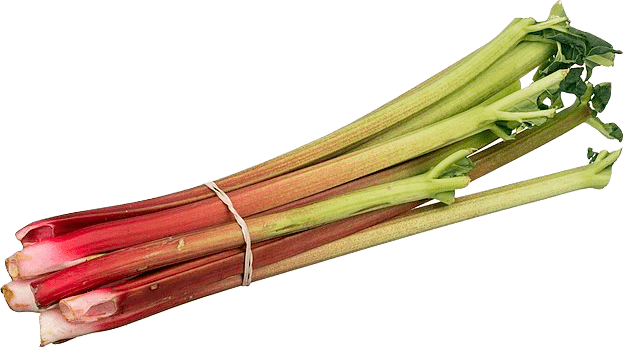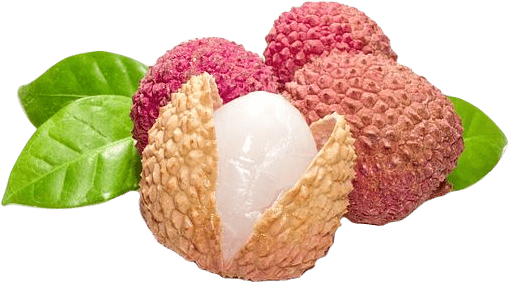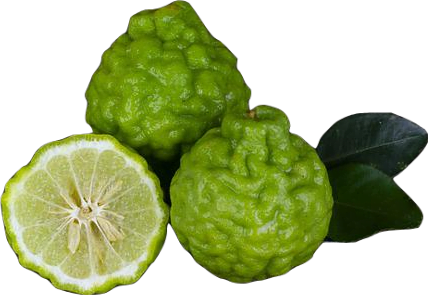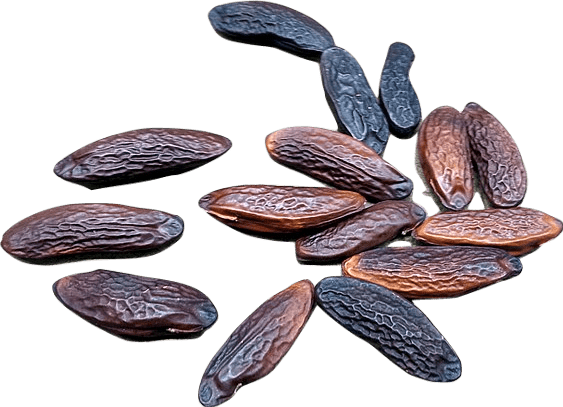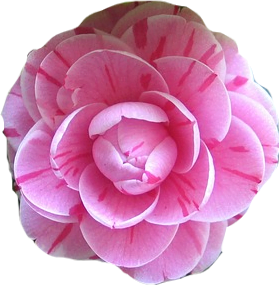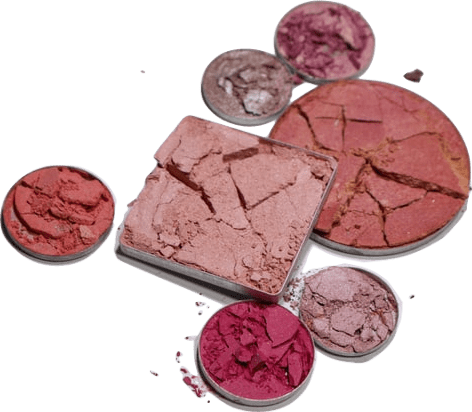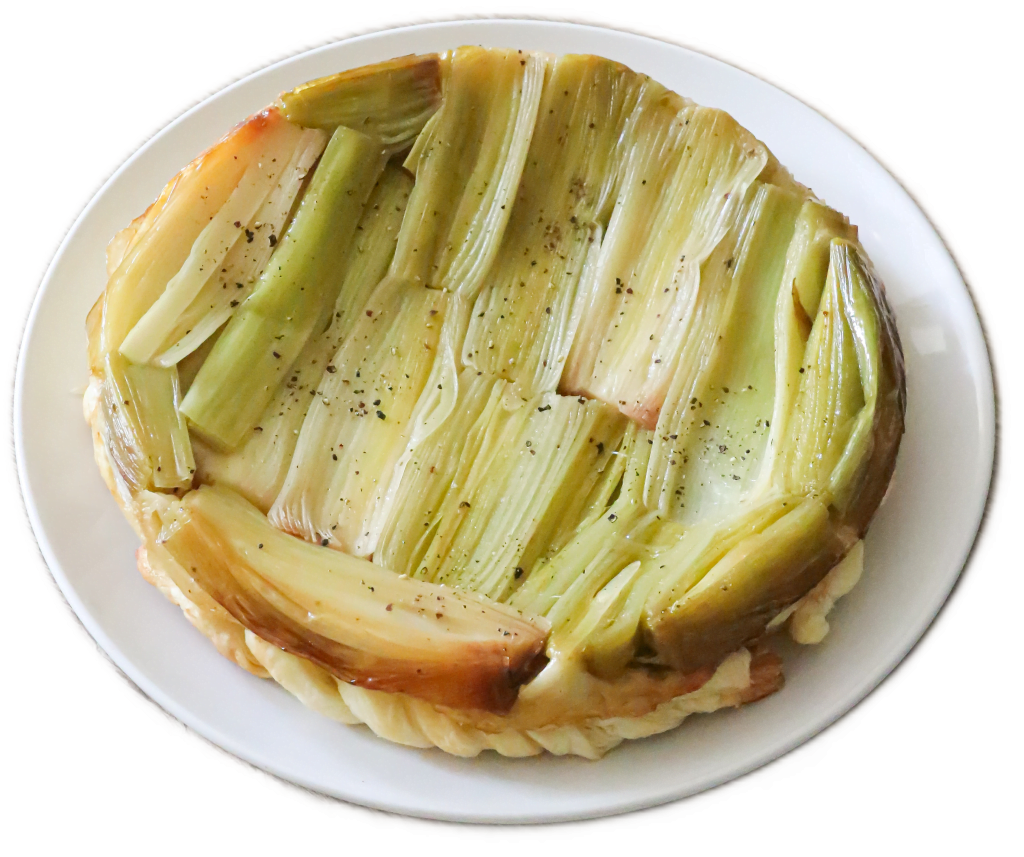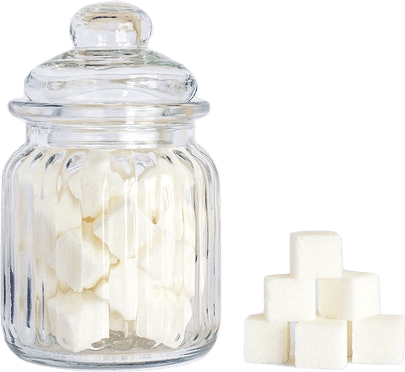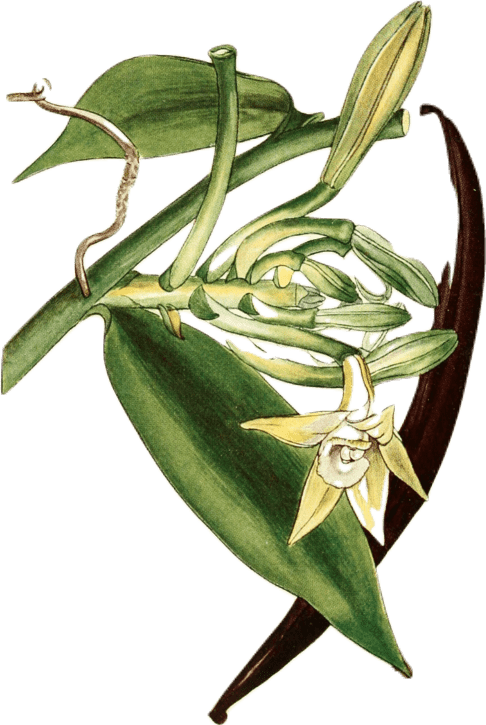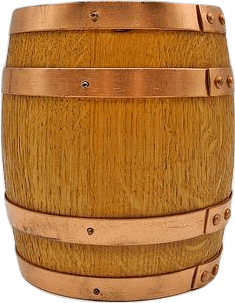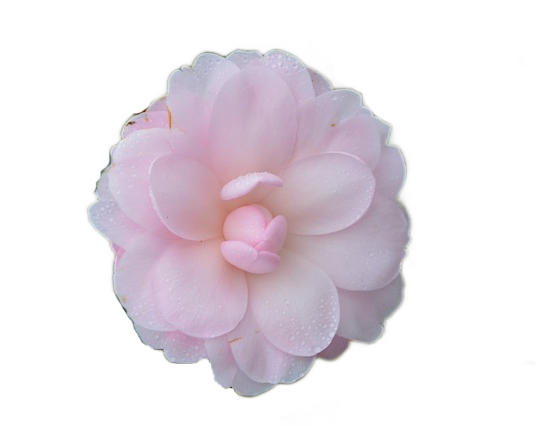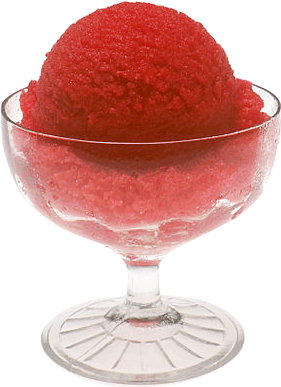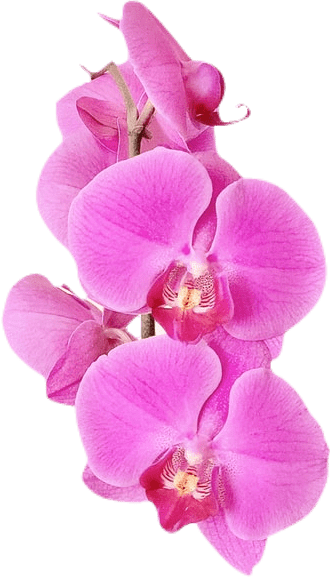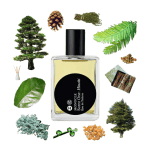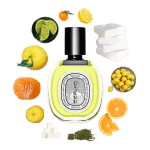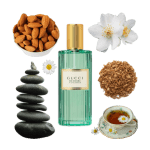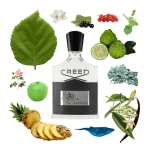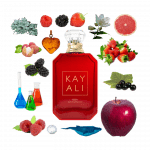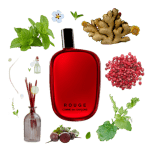Sherbet Series 5: Rhubarb Eau de Toilette by Comme des Garçons Review
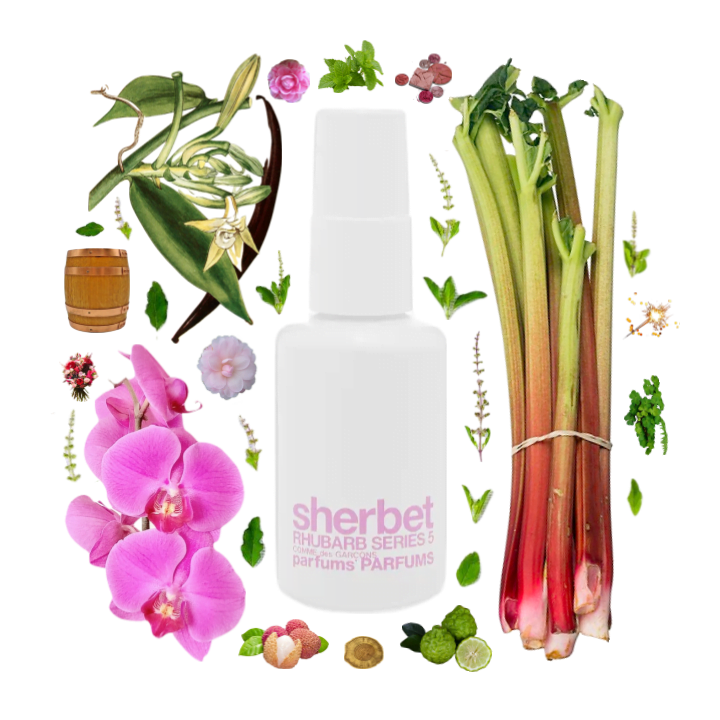
Rhubarb is like a fascinating kaleidoscopic butterfly that lives only for a single day. It’s nuanced, innovative, and refreshing, but simultaneously at home in the designer market and easy to like.
The problem? It’s the most short-lived fragrance I’ve ever sampled thus far.
Comme des Garçons’ Sherbet Series 5: Rhubarb (or, as it’s sometimes called, Series 5 Sherbet: Rhubarb; I’m taking my ordering of the words from the Comme des Garçons website, but the other one is also common) Eau de Toilette is one of a line of three sherbet-inspired fresh scents. The other two are Peppermint and Cinnamon.
For clarity, since it’s the Rhubarb installation in the Sherbet line, I’m going to be referring to it throughout this review as Sherbet: Rhubarb.
(As an aside: I wonder whether the collection is connected by some loose olfactory thread. I smell something that feels a little like mint and a warm spice that’s not quite cinnamon in Sherbet: Rhubarb. I can only wonder whether Peppermint and Cinnamon contain similar references to one another, as I haven’t tried them yet.)
In the vial, this smells minty to me. It’s that mix of minty green notes, background sweetness, and a tinge of alcohol that makes me think a little bit of Listerine mouthwash.
Unlike other fragrances whose opening I’ve compared to mouthwash, though (like Guerlain’s L’Homme Ideal and Paul Sebastian’s Onyx), this one feels subtler and less alcohol-heavy. It’s less of a minty-clean fresh punch in the face and more of a quiet minty melange, with other green notes lurking in the background behind the puff of pastel teal freshness.
There’s something else, too, lurking in the background that somehow makes me think of a classic men’s aftershave or cologne. This smells a little to me like the wooden cabinet in my parents’ bathroom at home, filled with things like toothpaste and mouthwash and aftershave and shower gel.
This is one of those instances when what you smell in the bottle is exactly the same on skin (at least, on my skin). Applied to my wrist, Sherbet: Rhubarb continues its minty-sweet green mouthwash dance. There’s still no aggressive burst of perfumers’ alcohol; instead, the notes themselves mingle in a sweet-and-green way that makes me think of the flavors of various oral hygiene products.
I’m the only one I’ve asked that perceives this as minty. But it’s unquestionably green and very aromatic in a way that brings to mind various herbs and herbal scents and flavorings. The crisp, clean tang of green rhubarb here is aromatic in a way that feels most like sweetened mint flavoring to me, but it might very well feel quite different to you.
I think interpreting this phase is more about associations and personal experiences than concrete notes. Which is true of fragrance generally, but at moments like this one I’m particularly struck by how much our memories shape how we perceive a scent.
Regardless of how you read it, the rhubarb really is the star of the opening. It’s immediately apparent, dancing its sweet-fruity-tangy-minty-green two-step under your nose. The dance is something like a beguine line dance: elegant and organized and polite like ballet, but with unexpected sharp, prickly, and sensual shapes to it, legs crossing over one another to turn in ways reminiscent of historical jazz.
There’s a general fruity shape to the rhubarb accord that becomes increasingly apparent after five to ten minutes, when the greatest burst of green has faded away. There’s still that minty-feeling sweetness at play, but it’s shaping itself into something that feels more and more like a pink or red sort of fruit note.
A tropical pink sparkle makes a brief appearance. It’s the lychee note! Like everything else about Sherbet: Rhubarb, it’s subtle, but it shapes and lifts the rhubarb accord into something that feels fruitier, juicier, a little bit sparkly, a little bit pink.
There’s something else here that lifts the juiciness and sparkle beyond the soft cerise-colored realm of lychee. Although nothing here feels at all explicitly citrus-y, I suspect this is the effect of a carefully blended hint of bergamot. It’s extraordinarily subtle, something I have a hard time parsing out, but there’s a sour yellow sort of juicy undercurrent here that contrasts with and exaggerates the minty green facets of the rhubarb.
I think this bergamot note is a large part of what creates a subconscious “classic men’s cologne” effect for me in the shape of Sherbet: Rhubarb.
The combination of fruity and fresh manages to avoid being at all shampoo-ey, which is a feat. There’s nothing soapy-clean here, though the effect of the particular strain of green freshness here brings to mind a clean wooden bathroom cabinet.
There’s also something that feels warm spicy to me lurking in this fragrance to me. It’s not overly peppery and piquant, not dry like black pepper, not dusty and sweet like cinnamon. It’s what my boyfriend calls a “brown spice” note, warm and unsweet but not too sharp.
For what it’s worth, here’s the non-frag-head boyfriend’s full appraisal: “Floral. Maybe a little green. Green and floral. A little fruity. Sweet. Definitely sweet. A little bit of… brown spice.”
So much more succinct and astute than I am. He really should start his own blog.
That warm spiciness makes me think of a couple of things. The first is a clever concentration of coumarin, which I suspect supports the herbaceous aromatic and later creamy vanilla accords in Sherbet: Rhubarb. Coumarin, the main aroma ingredient in the tonka bean smells herbacious when concentrated, like freshly-cut hay, and then becomes mellower and more vanillic at lower concentrations. This is a neat trick, and it follows the rough shape of this fragrance. I don’t know for sure that I smell actual tonka bean here, but the shape is curiously similar.
The second is… it’s hard to say exactly what spice this is. It feels like a warmer, more brown sort of cardamom that’s lost its green-spicy edges. Whatever it is, it’s mild and unobtrusive, and warms up the base of the composition nicely.
That undercurrent of warm spice is most prominent in the opening. By half an hour in, it’s faded enough into the background that I begin to wonder whether it’s simply a facet of the oak note.
By thirty minutes to an hour in, all hints of green and most of the fruitiness are entirely gone, and Sherbet: Rhubarb transforms into a scent entirely focused on soft pink florals.
The florals originally become apparent about ten minutes in, but by half an hour in they’re the main player in Sherbet: Rhubarb. These are soft, pink, slightly powdery designer floral notes. Not as soft, fluffy, light-colored and inoffensive as peony, but these are notes of a similar caliber, with just a little more personality to them.
Camellia (also called japonica) and orchid are both fantasy floral notes. Neither of them actually smell like anything in real life.
Instead, what’s constructed here is like a slightly denser, sweeter, heftier sort of peony note. It’s not a diffuse sort of synthetic floral note like the Petalia in Burberry’s Burberry Brit Rhythm for Women. It’s fluffy and inoffensive, but not in a light, airy way.
No, there’s a heft to these sweet, polite pink florals, a significant splash of powderiness coating them. They’re mellow, light-pink in color and timbre, but with more sweetness and powder and character than peonies. The fantasy orchid note here is very similar to the one in Calvin Klein’s Euphoria, sweet and pink, lit from below with a faintly yellow undertone. (Depite the name, I don’t mark much similarity here to anything in Tom Ford’s Black Orchid.) It’s coated in a layer of peony-like petals and powder that mark the fantasy camellia note.
The floral accord as a whole is a little bit stuffy to me, pink and tame and powdery in a way that feels a bit staid. This is the sort of floral accord that some might associate with their middle-aged female relatives. It makes me imagine a stylish, office-job-holding powerful woman in her fifties, wearing something close to the body that she finds comforting and safe, a slightly powdery pink beacon to lead her through her day with confidence.
There is also something that feels quintessentially early-2000s-designer-floral here, which makes sense since that’s exactly what this is. It’s not just the orchid note, but the overall construction and mix of pink powdered flowers and fresh fruit juices that reminds me of iconic perfumes of the time like Euphoria.
There’s still a slightly pink fruity edge to the florals, no longer sparkling with juice but softened with a certain dense, reddish lushness. Every once in a while I get the faintest aromatic hint of warm, aromatic bergamot juice. It fills me with a fierce sort of pleasure; somehow the effect of those faint whispers of bergamot and herbs at this stage make me think of the maddening heady effect of a good indolic floral.
There’s a similar narcotic quality to those scarce shreds of rich, fruity juiciness and that shine through Sherbet: Rhubarb just a few times. Sometimes a faint ray of rhubarb even shines through, and it’s like heaven: definitely ruby-red and rich and fruity, dizzying and heady, no longer a fresh zingy green scent, now the sort of dripping juicy red rhubarb you’d bake into the perfect pie. It’s never actually explicitly gourmand in a baked-good way, but somehow remains in that delicate fruity-vegetal-sweet balance that makes your mouth water.
These moments of singing fruitiness are absolutely delicious. On me, it feels like the fruity facets of Sherbet: Rhubarb really need an hour or so to truly warm up and develop into that rich, heady juicy mixture.
This is, of course, a problem. Because by an hour in, those fruity notes are all but gone. If talented nose Bertrand Duchafour had managed to stretch those fresh, juicy, warm fruity notes farther, I’d be in complete awe of Sherbet: Rhubarb. Those few moments when they shine through are absolutely delicious.
But, alas, high-quality fruity notes are top notes, and little short of witchcraft can make them stick around for long. There are sparkles of incredible beauty in Sherbet: Rhubarb, but they’re so ephemeral and so faint that you really have to go digging to find them.
The sweetness in Sherbet: Rhubarb is a curious thing. At the beginning it feels like too much on me, a jarring clean-artificial-sweetener playing with the minty nuances of the green rhubarb juice in a way that feels like mouthwash.
Then, as the aromatic facet fades, it feels slightly more natural as a backing for the fruity notes, albeit still feeling like a significant heap of sweetener.
An hour in, it blends with the floral and slightly powdery camellia and orchid in a way that feels natural, albeit slightly stuffy and sickening to me, like a window needs to be opened within Sherbet: Rhubarb.
And then, at last, when the fragrance hits that second wind of fruitiness, with those whispers of rhubarb, lychee, and bergamot peeking through, it feels entirely natural and at home.
It’s not until an hour and a half in that a vanilla shape to the sweet accord begins to become apparent. Underneath the fruit and flowers, a cream-colored whisp of fading sweetness is warming up. It never feels edible or gourmand, but at this phase there’s a definite vanilla note backing the orchids and camellias, though you have to breathe a little deeper and pay attention to find it.
Along with the rising vanilla accord comes a hint of oak. The two notes blend together in their creaminess and faint sweetness, intertwined in their mild embrace. Nothing in Sherbet: Rhubarb ever feels properly woody to me. There’s a tiny suggestion of oak that characterizes the vanilla accord, keeping it grounded in smoothness rather than floating off into playdough land, but there’s not much here that feels solid and sturdy in the way substantial woody notes often do.
The strongest waft of oak I get here is an occasional boozy-leaning suggestion of it, one that makes you think perhaps the fruit, flowers, and vanilla pods are being stored in fine cognac barrels. It keeps to the background, providing a pleasant hint of structure upon which the floral notes and vanilla can rest.
It feels to me like what there is of oak here melds seamlessly with the orchid, creating the accord that dominates the drydown of Sherbet: Rhubarb.
Maybe dominates isn’t the right word. Nothing about this scent dominates. But just as the florals had executed an incredibly gentle coup d’état and overthrown the rhubarb dynasty, they now raise orchid as their queen, sitting on a throne of understated oak made out of upcycled and repurposed old barrels.
Our new queen continues to fade as time goes on, gently and in a linear fashion. The sweetness finally feels balanced to me, the camellia powderiness fading; all that’s left is orchid and oak, with the occasional faintest glimmer of rhubarb juice.
And then a curious thing happens.
At around two hours in, the powdery floral accord seems to have hit its zenith.
Beyond this point, the fruity side of Sherbet: Rhubarb seems to hit a second wind. It’s all incredibly faint, but things feel mild and perfectly balanced: a fresh spray of rhubarb juice, a background hint of orchids and oak barrels. This final unexpected return of the rhubarb in the drydown is incredibly quiet, but it’s there and it’s oh so lovely.
This is the stage that finally feels entirely balanced as it should be, like this is the signature of the coposition known as Sherbet: Rhubarb, juicy and zesty and tangy and fresh, not too sweet, with just a hint of pink florals in the background. It’s a harmony that makes me smile. I’m happy everything came back together for one last faint hurrah.
By three hours in, Sherbet: Rhubarb has become so faint that I’m unsure whether I still smell the faintest hint of it on my skin or am imagining it.
Much like Maison Martin Margiela’s Soul of the Forest, Sherbet: Rhubarb is a skin scent from the instant it lands on skin.
What about the name? The rhubarb note here is clear enough, extremely ephemeral but developing quite nicely over the course of two to three hours. Die-hard rhubarb fans will want to try this one just to experience the aromatic green mintiness of the note in the opening and then the rich dripping ruby-red rhubarb later on.
And sherbet? Is there anything about this that resembles any sort of sherbet? Well, my sherbet experience is limited, but nothing about this reminds me of the sugar-and-juice-based frozen treat often called sherbet. Sure, it’s light and sweet, faint and ephemeral and well-suited to a hot summer day, maybe even a bit refreshing in its opening. But there’s nothing about Sherbet: Rhubarb that feels particularly gourmand or edible or cold, and really it’s only significantly a fruity scent for a few minutes of its runtime.
But there’s a second definition of the word sherbet that I suspect might be more apt here. In the UK, sherbet is a fruit-flavored artificial sweetener powder. To quote the Cambridge Dictionary, it’s “an artificial powder with a fruit flavor eaten as a sweet or used to make a drink, especially for children.”
This, I suspect, is the inspiration behind the Sherbet Series name. The sweetness of Sherbet: Rhubarb certainly does feel like a heap of artificial sweetener to me. It doesn’t feel repulsively synthetic in any way, but it’s utterly devoid of the nuances that might mark it as sugar or honey or concentrated fruit juice or something else entirely. This is the sort of pure, neutral sweetness that is designed in a lab, made to be colored in with the flavor of something else. In this way, the sweetness of Sherbet: Rhubarb is colored in by a splash of rhubarb, lychee, and bergamot and a heavy dose of pink florals.
This is even powdery in the same way a sweet fruity drink powder would be. It’s not ground to a downright dusty texture, but the texture of Sherbet: Rhubarb feels like a fine, light-pink colored powder that comes out of a plastic straw.
Sherbet: Rhubarb is an interesting scent. It feels like a staid early-2000s orchid-and-camellia powdery floral designer scent. It feels like an innovative exploration of a gloriously three-dimensional and evolving rhubarb note. It feels like a feat in perfumery realism and an odd minty mouthwash and an artificial sweetener powder all in one.
I’m fond of Comme des Garçons for the unusual and innovative creations they put out. Sherbet: Rhubarb is certainly up to snuff in this respect. It brings several new things to the table: a delicious fresh realistic rhubarb note, a sparkle of well-executed lychee, a fruity scent with an aromatic, traditionally masculine underbelly, and a cute nostalgic-powdered-drink-mix artificial gimmick.
That rhubarb note, in particular, is fascinating. It’s crisp and tart and delightfully aromatic in the first act, then seamlessly becomes richer, redder, jammier, sweeter. It’s still fresh, but it’s the sort of overripe rhubarb that’s practically begging to be baked into a pie and gobbled up. It’s a delectable performance, impressively photorealistic at points and multi-dimensional.
Comme des Garçons describe the Sherbet Series as “natural sprays.”
“Natural” is a marketing buzzword that doesn’t mean anything. But perhaps there’s some new rich combination of natural extracts and oils from rhubarb here that make this an impressively textured and tragically short-lived incarnation of the note.
I can see a number of original innovations happening here. This fragrance doesn’t knock my socks off, but I’m enjoying watching the ideas here come together.
I think Sherbet: Rhubarb is a rare fragrance art piece that is both creatively interesting and incredibly crowd-pleasing. Often the things that feel new and intellectually stimulating in perfumery are a bit odd, perhaps even a bit repulsive, unusual explorations off the beaten path. Sherbet: Rhubarb manages to feel very designer, office-friendly, casual and safe while still playing with some really interesting new ideas. That’s a cool feat.
Artistry, crowd-pleasing, and performance do feel like a bit of a “pick two” triangle situation, though, don’t they? The perfumes that play with new ideas that are still incredibly easy to enjoy are usually flirting with newly realistic yet ephemeral fruity notes. Sherbet: Rhubarb is no different.
This is interesting and easy to like, but its performance is the worst of any fragrance of any kind I’ve tried to date. It’s an instant skin scent with zero sillage and lasts a maximum of two hours on the skin, maybe three if you’re very lucky. Past that point, you may get the faintest occasional whiff of perfectly balanced juicy rhubarb if you’re looking for it, but it’s otherwise all but gone.
This makes Sherbet: Rhubarb a hard sell for some people, and I can see why it’s been discontinued. Much like the case of the Soul of the Forest, I can see this having a fan following and continuing to be produced if it projected and lasted any significant amount.
But alas, it doesn’t, and thus it’s been relegated to private collections of quirky, unique rhubarb scents.
If you’re not particularly into rhubarb or pink designer orchids or sweet drink mix powder, there may not be enough to Sherbet: Rhubarb to be worth your while, especially considering its almost-nonexistent performance.
But if you’re a rhubarb lover looking for an intriguing and realistic twist on that beloved note, or you have nostalgic feelings for powdered-sweetener drink mix, or you just really like pink florals with hints of fruit and oak, you’ll want to get your hands on Sherbet: Rhubarb.


